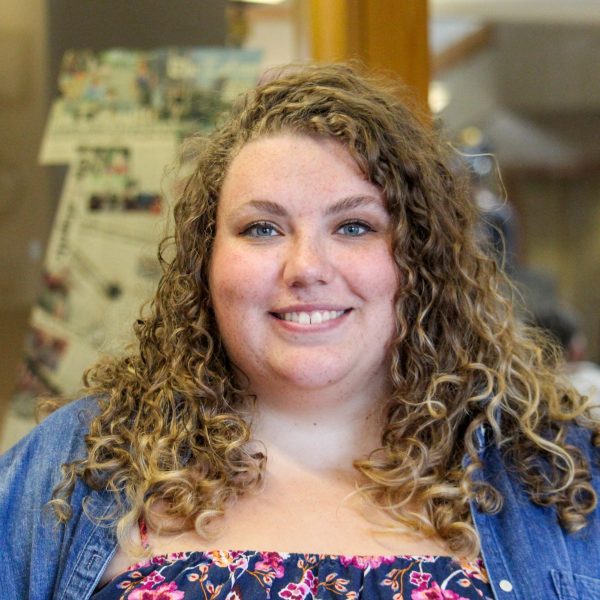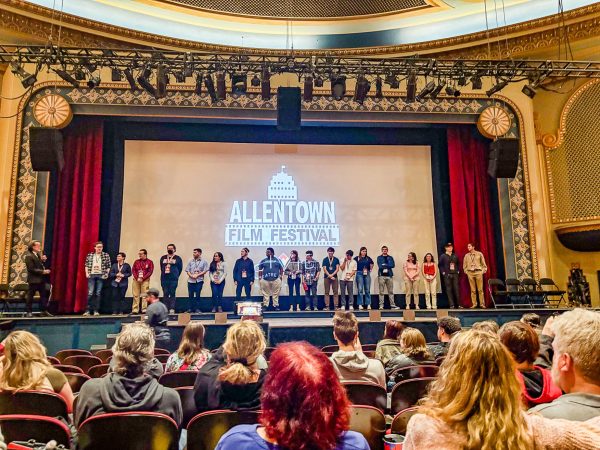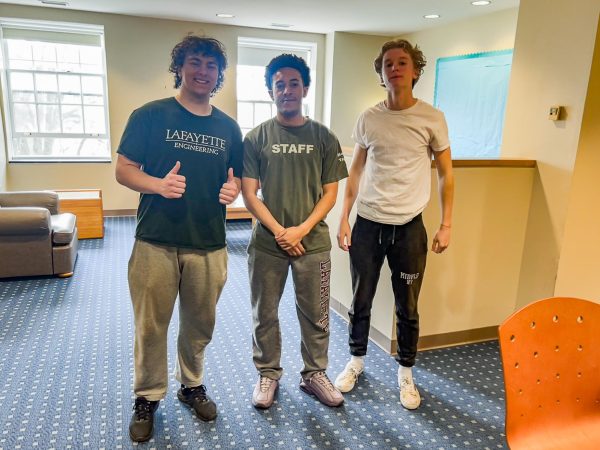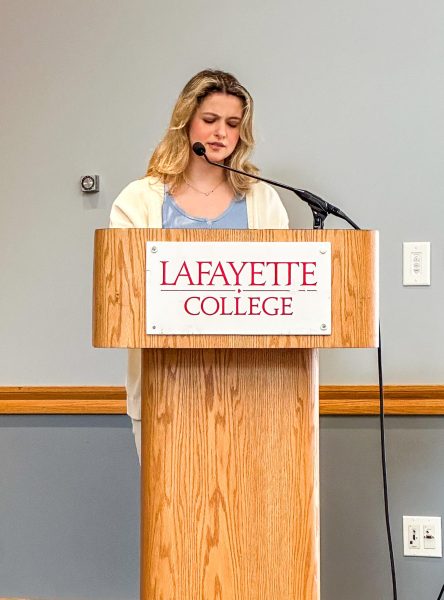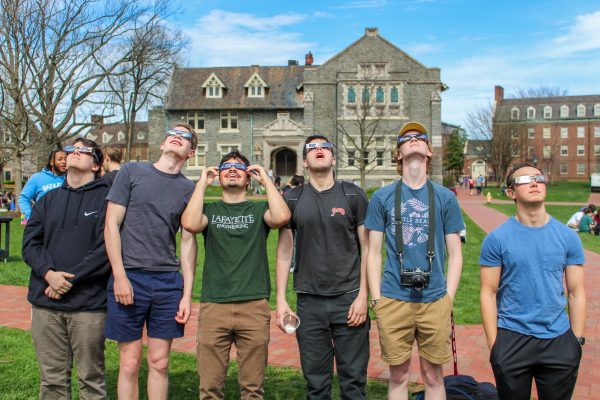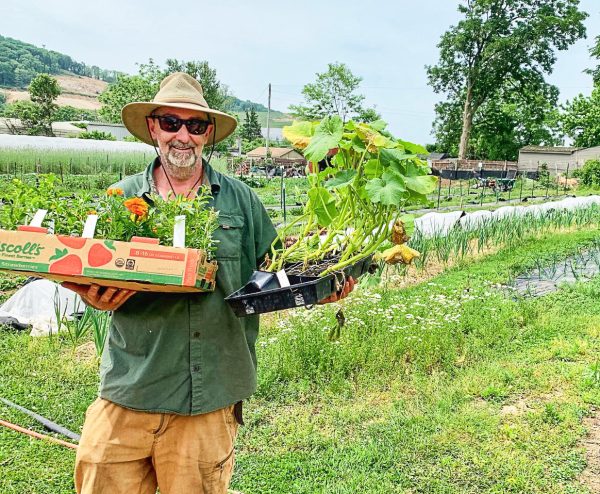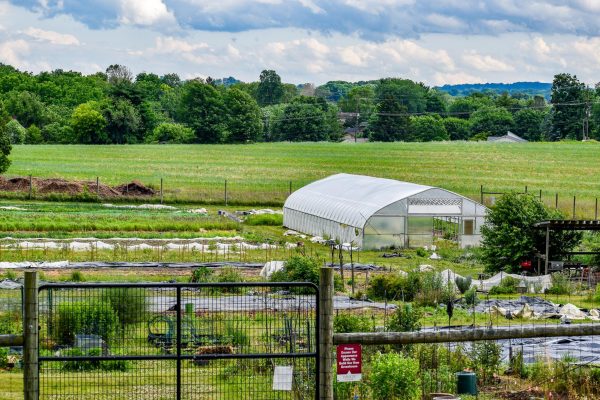Women in STEM Week: A spotlight on some women of the Clare Boothe Luce Program
Kitty Pierre-Louis ’23 focuses her research on the effect of UV light on aerosols in the atmosphere. (Photo courtesy of Kitty Pierre-Louis ’23)
April 8, 2022
Female students on Lafayette’s campus are making discoveries for research projects funded by a grant from the Clare Boothe Luce (CBL) Program for women in engineering.
The CBL program is named for Clare Booth Luce, who was a member of the U.S. House of Representatives, the U.S. Ambassador to Italy, a journalist and a playwright. The program is sponsored by the Henry Luce Foundation. This grant was first offered to the Lafayette community in 2016 and was then renewed in 2021 for three more years. This renewal awarded Lafayette over $240,000 to support 48 female researchers in their faculty-mentored projects over the course of the three years.
Chemical engineering is one of the many departments that utilize this grant to fund female research students.
Kitty Pierre-Louis ‘23
Since the summer of 2021, Pierre-Louis has been working on a project involving the concentration of aerosols, or “liquid or solid particles suspended within air,” in the atmosphere.
Pierre-Louis works with an atmospheric chamber — a box one cubic meter in size that mimics the conditions of the Earth’s atmosphere. Thus far, she has worked to characterize the chamber by measuring airflow in and out and determining the size and concentration of aerosol particles after a given amount of time. Using a particle counter, Pierre-Louis can measure the rate of decay on the chamber walls.
Soon, Pierre-Louis will be determining how UV light affects the decay of aerosols in the atmospheric chamber under the mentorship of Chemical Engineering Professor Joseph Woo. This research has larger implications for climate studies regarding how sunlight affects organic compounds.
“This is important to help our climate change models,” Pierre-Louis explained. “Volatile organic compounds that are already in the air react with the sunlight, and then they form other secondary, organic aerosols that react differently with pollutants.”
Pierre-Louis described the “chain reaction” that takes place starting from the interaction between these compounds and UV light. “Very small nanometer or micrometer aerosols chain react and become hurricanes. It’s a very sequential thing. So even studying the small section of just air atmospheric chemistry, atmospheric science can affect bigger weather patterns.”
Molly Dougher ‘22
Dougher’s research also has environmental implications. This past summer, she began working on CBL-funded research regarding the production of biofuels. She is now working on the same topic as part of her honors thesis.
According to Dougher, biofuels are traditionally produced using a process called transesterification. The biofuel, or fatty acid methyl esters (FAME), is the main product of this process, but this method produces a wealth of glycerol as a byproduct. Because of the oversaturated market for glycerol, it is considered to be a waste product in this process.
The process with which Dougher is experimenting, known as interesterification, produces triacetin as a byproduct rather than glycerol. In contrast to glycerol, triacetin has a number of secondary uses in industries such as polymers and explosives. This makes interesterification a “greener” process than transesterification.
The next phase of Dougher’s project involves an economic analysis to determine if interesterification is a viable financial alternative. “We know it would be physically ideal, but I don’t know if it’s going to be economically feasible to do this,” she said.
“If it does turn out that there’s certain conditions where interesterification can be used, it can help revolutionize the biodiesel industry, hopefully making [it] more commercially available and less expensive,” Dougher explained.
Maddie Carroll ‘22
Carroll began working on research with the CBL grant during the summer after her first year at Lafayette and continued this research within the EXCEL program for over a year. The research revolves around thermodynamic models of hydrogen bonding components such as alcohols.
Carroll helped to code a thermodynamic model that could represent systems of hydrogen bonds. She referred to the system as a “hydrogen bond categorization code” in which the team would “feed the model atoms and molecules, and it could basically calculate for us which molecules were hydrogen bonding to each other.”
“With that information of which ones are bonded in different orientations and configurations and clusters, you can just figure out how the solution as a whole is going to behave to better predict some of its properties,” Carroll continued.
The calculations center around alcohols, which contain hydrogen bonds.
“Alcohols are important in industry because of how prevalent they are as solvents. The reason that they’re so hard to capture correctly is essentially because of the way hydrogen bonds to other things like water or other alcohols or even to themselves. It just makes them behave on a molecular level in a very different way,” Carroll explained.
Carroll’s research will be beneficial to the production of engineering equipment. She used simulation tools to prove the efficacy of the model so it can eventually be sold as a software package. “They would be able to use it with whatever simulation tools they have to design or redesign their plants to make them more accurate designs of what they’re actually going to see in the real world,” she said.
Carie Feigeles ‘22
Feigeles focuses her CBL-funded research on the interactions between nanoplastics and antibiotics in aquatic organisms.
According to Feigeles, antibiotics pollute bodies of water through human excretions which exit the body 80% unaltered. They remain in the water despite efforts of treatment plants and interact with nanoplastics that enter the waterways through bottles, cosmetics and pharmaceuticals.
Feigeles’ research specifically uses trout cells because nanoplastics and antibiotics remain suspended in the water at the same level as swimming fish.
Feigeles cultures the cells before introducing them to nanoplastics and antibiotics to measure the substances’ effects on their viability. She uses “an instrument called a plate reader, which will read the absorbance, which tells how viable and how living cells are.”
The findings of Feigeles’ research can be used to determine the necessary course of action for eliminating these substances in the water.
“If there’s no effect on our organisms, then we can take one path to treatment where it’s less immediately necessary versus if we’re seeing a lot of effects, we can say ‘Hey, this is an issue. Here’s the data. How can we fix this? Can we get more regulations going? Can we get different treatment types going?’” she explained.






































































































